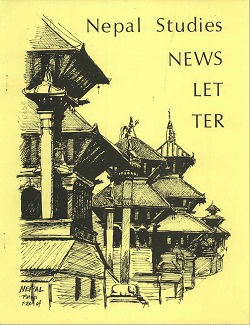Author Biography
Mark Larrimore (Ph.D. Religion, Princeton University) is Associate Professor of Religious Studies at Eugene Lang College of Liberal Arts, The New School. He is the editor of The Problem of Evil: A Reader (2001), The German Invention of Race (with Sara Figal, 2006) and Queer Christianities: Lived Religion in Transgressive Forms (with Michael Pettinger and Kathleen Talvacchia, 2014) and author of The Book of Job: A Biography (2013). His areas of interest include modern manifestations of religion and the politics of their study, the history of ethics, interfaces of religion and the arts, lived religion, and the future of the liberal arts.
Abstract
Analyses of everyday religion and sustainable environments in the Himalaya are not helped much by the blunt instruments of “world religions” approaches to religion and ecology. This article suggests that a better grounded understanding, especially helpful for policy-makers integrating case studies from widely varying regions, might be gained by bypassing debates about the nature of “religion” entirely. Inspired by discussions in the Everyday Religion and Sustainable Environments project, this article proposes a research framework with the deliberately mundane name resource use decisions. Attending to the reasons given, in various settings and to various stakeholders, for decisions regarding the cultivation and use of resources will take us beyond unreflectively secular understandings of these terms, as well as beyond reified understandings of “other-worldly” religion which exist more in the texts of scholars than in the everyday worlds where religion lives. Consonant with the recent turn to “lived religion,” resource use decisions draws attention to the religious creativity of agents at every level, lay, specialist and even other-than-human, and to the categories they employ in navigating and sustaining religious worlds. This approach better suits the ecologically, culturally and politically varied and changing Himalayan region, but also suggests ways in which Himalayan studies can contribute to broader reflection on the nature of religious practices and traditions in a pluralizing, globalizing and environmentally changing world.
Acknowledgements
This work emerged from an opportunity to explore Himalayan climes and questions afforded by The New School’s India China Institute. The author is grateful to audiences of earlier versions of these ideas presented in Shangri-La, Darjeeling, Gangtok, Delhi and New York, for the inspiration and conversation of Georgina Drew and Ashok Gurung, and for the helpful suggestions of two anonymous reviewers.
Creative Commons License

This work is licensed under a Creative Commons Attribution 4.0 License.
Recommended Citation
Larrimore, Mark. 2016. Resource Use Decisions: A Framework for Studying Religion and Sustainable Environments. HIMALAYA 36(2).
Available at:
https://digitalcommons.macalester.edu/himalaya/vol36/iss2/10


